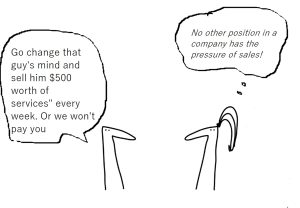“The traditional channel is in decline, Telecom certainly is.” – a message I received today.
Telecom revenues are certainly declining – and UCaaS revenues, but the telecom industry itself is strong. There are $65B in government dollars being put toward building fiber to every doorstop. That is being accompanied by $30B in PE money.
The telecom industry is going strong right now.
There will be a lot of M&A in the ISP/telecom space in the next 4 years.
There has been a lot of M&A in the partner space – both agencies and MSPs. That will continue as well since many partners have been at it 15+ years and are ready to retire.
That is why the channel itself is in flux – and pundits believe that the channel is dying. It is changing, but it isn’t dying.
Many believe marketplaces will replace the partner for some percentage of sales. I say that will happen for a small fraction of sales. The value partners bring to a technology sale can’t be found in a marketplace.
Are new partners entering the channel? The TSBs say so.
Are “retired” or cashed out partners coming back to sell? Hell yes. For a variety of reasons.
Is there too much channel conflict? Not really. Just most of the hush-hush stuff is now out in the open. That TBI had a call center; and that most TSBs own a base of customers that hopefully they are farming.
The real two problems: (1) can the PE-backed TSBs survive? And if not how badly do the partners get hurt.
(2) With everyone farming, who is hunting? Vendors want new logos. They are leaning hard on the channel for new logos. Many vendors complain that there aren’t enough new logos coming in.
Some of that is that there are less selling agencies now than pre-pandemic. Some of it is that with the diminishing network and UCaaS revenues and renewals – and the demise of MPLS – partners are focused mainly on survival. We have to sell twice as much as we did 5 or 6 years ago. A lot of that is going to be transactional sales.
Also, as agencies start selling CX and Cyber-Sec and whatever, the traditional vendors won’t see that revenue. So sales are happening, just the Enormous 10 don’t see it. It goes elsewhere.
It’s like MPLS money. Infrequently was an MPLS network replaced. It was renewed. Until it is replaced with SD-WAN. And that is likely not going to AT&T or VZ (or Lumen). It is going to Masergy/Comcast, Aryaka, Cato, and others.
Telecom’s biggest issue is the declining revenue. And Comcast Business is the largest CLEC they have ever faced.
But back to the initial Q: is the channel or telecom dying? NO!
Does it look different? Yes.
It is in flux? Definitely. Probably more risk being an Agent than at any time in the last 25 years.





